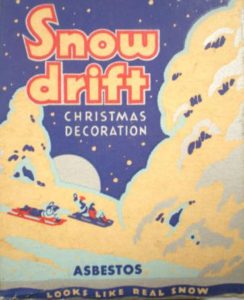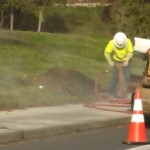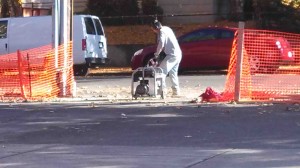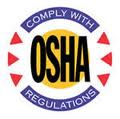Entries tagged with “PEL”.
Did you find what you wanted?
Mon 13 Jun 2016
Posted by admin under AIHA, Air Monitoring, Asbestos, Carcinogen, Ethics, Exposure, Federal OSHA, Hazard Communication, industrial hygienist, OSHA, PEL (Perm Exp Limit), Personal Protective Equip (PPE), Respirators, Training
Comments Off on Asbestos settlement – a new precedent?
I was recently forwarded an article on a gentleman who won a large sum of money ($8.75 million) for an asbestos related disease. There are many people getting these types of settlements for similar exposures.
However, what is interesting, is the attorneys argued the company knew about asbestos in 1965, but the exposure occurred in the 1970’s. Keep in mind, the asbestos rules at OSHA didn’t come out until the 1970s as well. So, exposure occurred before the regulations were in effect.
So, they knew of the airborne hazard, but continued to exposure workers before there was a rule. Does this sound like any modern day issue?  –hint– silica?!
Nowadays with the public being uber-aware of “potential” airborne hazards (mold?), with information so readily available, with OSHA rules outdated (annotated Z1 tables), and others publishing health standards like ACGIH,….the lesson is: protect your employees.
IÂ don’t think we should be arguing about the OSHAÂ rules. Let’s use available information and science. “More Than Just A Number” (article published by AIHA, May 24, 2016).

Tue 19 Nov 2013
Posted by admin under Dust, Exposure, Federal OSHA, OSHA, PEL (Perm Exp Limit), Silica, Uncategorized
Comments Off on Silica rule delayed
For better, or worse, the silica rule has been delayed, again. This delay is for an extension of the public comment period, which goes until December 12, 2013. Public hearings are set to begin on March 4, 2014.
Find OSHA here, with links to my previous post. A NPR story from February, 2013.
My views on this rule haven’t changed much: It’s still a mixed-bag. There are still overexposures to silica (see my pictures from the last 3 weeks). However, will the new rule change the behavior?
- Overexposures are still happening

- Silica deaths have decreased over the past (without the new rule)
- Will the small employers (the ones who typically offend the most) comply? Or just wait to be cited?
But, my overwhelming thought is this:
- Any new rule will generate “noise” for the subject of silica. And, that’s a good-thing.
- This will drive:
- compliance
- changes
- innovation
- discussions
- awareness

Wed 31 Oct 2012
Posted by admin under Admin Controls, Air Monitoring, Dust, Engineering Controls, Exposure, Federal OSHA, Hazard Communication, industrial hygienist, Management, OSHA, PEL (Perm Exp Limit), Personal Protective Equip (PPE), Safety Policies, Safety Programs, Training, TWA
Comments Off on OSHA Health Inspection – the aftermath
Background: A new client recently had an OSHA health inspection (industrial hygiene). He received citations stemming from overexposures(they found levels above the PELs) to airborne particulates.
The company wondered what to do next. Here were my suggestions:
- Fix the problem. You will need to comply and assure that your employees aren’t overexposed. Even if the inspection made you upset, use your energy to make the situation right. Focus your energy on removing the hazard, not complaining about how you were treated.
- Engineer the problem out. Remove the hazard. If not,
- Change your policies so no one is further overexposed. If you can’t fix it by the this, or the above method, then,
- Provide personal protective equipment to affected employees.
- Request the full inspection package. – this will include the officer’s field notes, interview questions, observations and sampling methodology.
- look through these documents carefully
- keep them for your records
- Â Informally appeal the citations.
- at the appeal show them you have complied/changed
- ask for a reduction in fines (it never hurts to ask)
- ask to group the citations together – instead of citation 1 item 1a, 1b, item 2, etc. ask to narrow it down to just one
- bring any additional information which supports your side and/or the changes you’ve made (including training docs, programs, policies, etc.)
- Resample the areas.
- make significant changes to these areas. Then,
- hire an industrial hygienist to perform additional sampling in these areas
- ask them to document the changes you have made to reduce the exposures
- review this with your safety committee & those affected
Fri 8 Jun 2012
On occasion, owners say they just want to do the minimum to be in compliance with OSHA. Most times this is due to lack of understanding.
 For some rules OSHA’s standard is right on the money. Take, for instance, lead (leaded paint) exposure. They have specific rules and guidelines that, if followed, keep virtually everyone protected*. The trouble is that some of OSHA’s rules have not been updated since 1973. New research and industry practices have found these levels to be unsafe even at current standards and exposure limits (PELs).
For some rules OSHA’s standard is right on the money. Take, for instance, lead (leaded paint) exposure. They have specific rules and guidelines that, if followed, keep virtually everyone protected*. The trouble is that some of OSHA’s rules have not been updated since 1973. New research and industry practices have found these levels to be unsafe even at current standards and exposure limits (PELs).
So, how do you know if the OSHA standards are current?
The quick answer is, you don’t.
Good safety professionals and industrial hygienists study the standards, recommended guidelines, and occupational limits worldwide.  In the US, the American Conference of Governmental Industrial Hygienists (ACGIH) provides the most current best practices. However, there are other methods and standards for specific hazards. ANSI, AIHA (although getting more dated due to lack of funding), European OELs (occupational exposure limits), and others.
It is rare that an employer knowingly exposes employees to a hazard. On the other hand, ignorance isn’t acceptable either….which might be the best reason for OSHA to be in existence. I wish they would spend more money on resources, information and training. Â Consult your safety professional!
*recently there is some discussion about low level lead exposure to children



